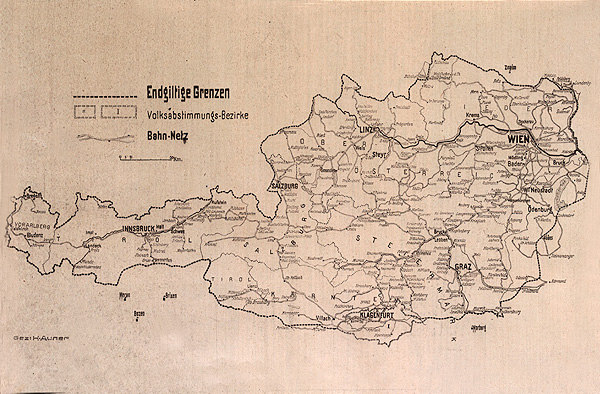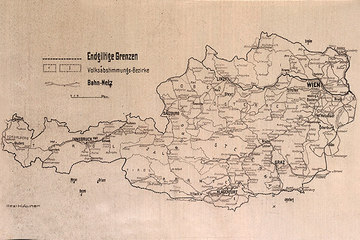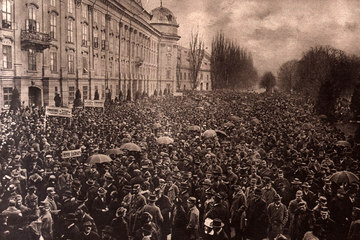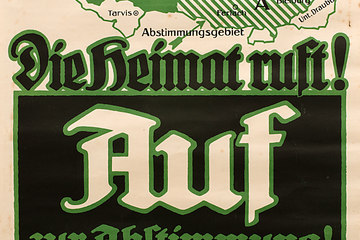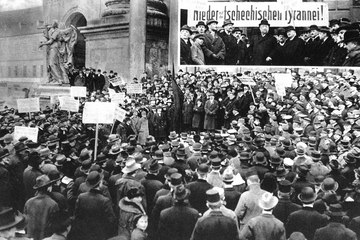A Country Draws Its Borders
After the end of the First World War and the collapse of the Austro-Hungarian Monarchy new national states arose in Central and Eastern Europe, but their definitive frontiers were only decided at the Peace Conference held in Paris from 18 January 1919 to 21 January 1920. The Republic of German-Austria, founded on 12 November 1919, laid claim to the German-speaking parts of Bohemia, Moravia and Silesia as well as German West Hungary (later Burgenland), South Tyrol, Lower Styria and Carinthia. However, since these territories were also home to Czechs, Hungarians, Italians and Slovenes, they were also claimed by the new states neighbouring Austria. This uncertainty over which state they would belong to aggravated the conflicts between individual nationalities. Although the peace treaty of Saint-Germain, which the Austrian Chancellor Karl Renner signed on 10 September 1919, included clear definitions of the borders, the ‘frontier question’ was not definitively solved until 1921.
Translation: Leigh Bailey

